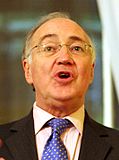| |||||||||||||||||||||||||||||||||||||||||||||
All 34 non-metropolitan counties, 3 out of 46 unitary authorities, 1 sui generis authority, 4 directly elected mayors and all 26 Northern Irish districts | |||||||||||||||||||||||||||||||||||||||||||||
|---|---|---|---|---|---|---|---|---|---|---|---|---|---|---|---|---|---|---|---|---|---|---|---|---|---|---|---|---|---|---|---|---|---|---|---|---|---|---|---|---|---|---|---|---|---|
| |||||||||||||||||||||||||||||||||||||||||||||
 Colours denote the winning party, as shown in the main table of results. | |||||||||||||||||||||||||||||||||||||||||||||
The 2005 United Kingdom local elections were held on Thursday 5 May 2005, with various councils and local government seats being contested in England and Northern Ireland, and a local referendum taking place on the Isle of Wight on the issue of a directly elected mayor. These local elections were held in conjunction with the 2005 general election across the entire United Kingdom.
Despite losing the general election held on the same day, the Conservatives made some gains at Labour's expense, providing some comfort to the party. Conservative leader Michael Howard resigned soon afterwards and was succeeded by David Cameron, who had a decent platform to build on in his challenge to lead the Conservatives to a general election victory; the party had increased its share of council seats and importantly its share of seats in parliament.


